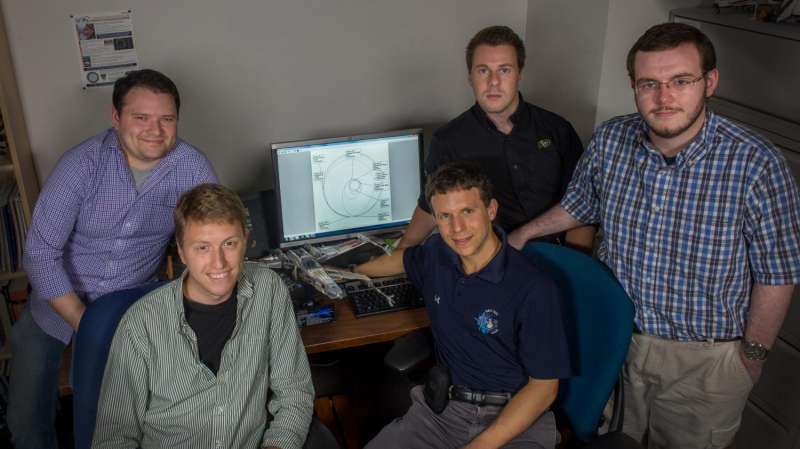NASA's tool for calculating orbital trajectories now aids in spacecraft design

A NASA-developed tool that private industry and other agency centers now use to plot a mission's path to far-flung interplanetary destinations has gotten significantly more proficient and can now even reveal—sometimes in just a matter of minutes—the specifics of the spacecraft's mission and elements of the system design.
Jacob Englander and his team from NASA's Goddard Space Flight Center in Greenbelt, Maryland, originally developed the fully automated Evolutionary Mission Trajectory Generator, or EMTG, to give mission managers a preliminary set of detailed directions for steering spacecraft to hard-to-reach interplanetary destinations.
Originally, the EMTG would calculate these roadmaps after mission developers inputted a series of parameters, such as the spacecraft's point of origin, its final destination, launch dates, and flight times, on a standard desktop computer.
The software tool then would determine the most efficient trajectories for reaching the final destination, detailing the number of flybys around other celestial bodies to alter the spacecraft's path or speed. Depending on the mission's complexities, the EMTG would execute multiple trajectories in just a matter of minutes, Englander said.
Given its usefulness to mission planners, Englander and his team decided to make EMTG available as an open-source program. It has since been downloaded thousands of times by NASA centers, private companies, and others to run preliminary trajectories, Englander said.
Expanded Capabilities
As good as it was, it's better now, said Matthew Vavrina, an orbital expert with a.i.solutions, a Goddard contractor.
He began working with Englander and his team in 2014. Initially, they enhanced the product to help support NASA's Asteroid Redirect Mission, or ARM, the agency's second robotic mission to visit a large near-Earth asteroid. During the mission, the ARM robotic mission spacecraft will collect a multi-ton boulder from an asteroid's surface and redirect it into a crew accessible orbit around the moon. NASA will then send a crew to the boulder to collect samples to return to Earth.
"We've expanded EMTG's capabilities quite a bit," Vavrina said. The original EMTG optimized a spacecraft's trajectory, which "in itself is quite difficult." Now, however, the tool simultaneously optimizes both the trajectory and the spacecraft's hardware. "We can now consider the full problem of designing a spacecraft," Vavrina said. "We can look at multiple performance criteria, including the spacecraft's solar arrays, propellant tanks, thrusters, and potential launch vehicles, for example, in a single run."
This added capability is important, Englander added. "The design of the spacecraft and its trajectory are intertwined—especially those that are electrically propelled. You can't determine a trajectory and then run off and design the spacecraft. They need to be considered together. With this tool, you can design the spacecraft and the trajectory at the same time."
Useful for Low- and High-Thrust Spacecraft
Although the updated tool is most effective at determining the trajectories and design characteristics of electrically propelled, or low-thrust spacecraft, planners also can use it to define some aspects of a high-thrust mission, one that uses chemical propellant as its fuel.
"EMTG can do high-thrust trajectories, but since high-thrust spacecraft design and trajectory design are decoupled problems, the systems capability isn't as useful. However, launch vehicle selection and the size of propellant tanks can have big effects on chemical trajectories, and EMTG can do that trade," Englander said.
Like its forebear, the more capable EMTG is available free of charge on open-source platforms. "It's still relatively new and it takes time for people to adopt it. It will catch on, though," Vavrina said. "It's too powerful of a tool to neglect, especially for managers who can look at all these objectives and make a decision with cost and schedule in mind. It certainly was perfect for ARM."
Provided by NASA's Goddard Space Flight Center




















